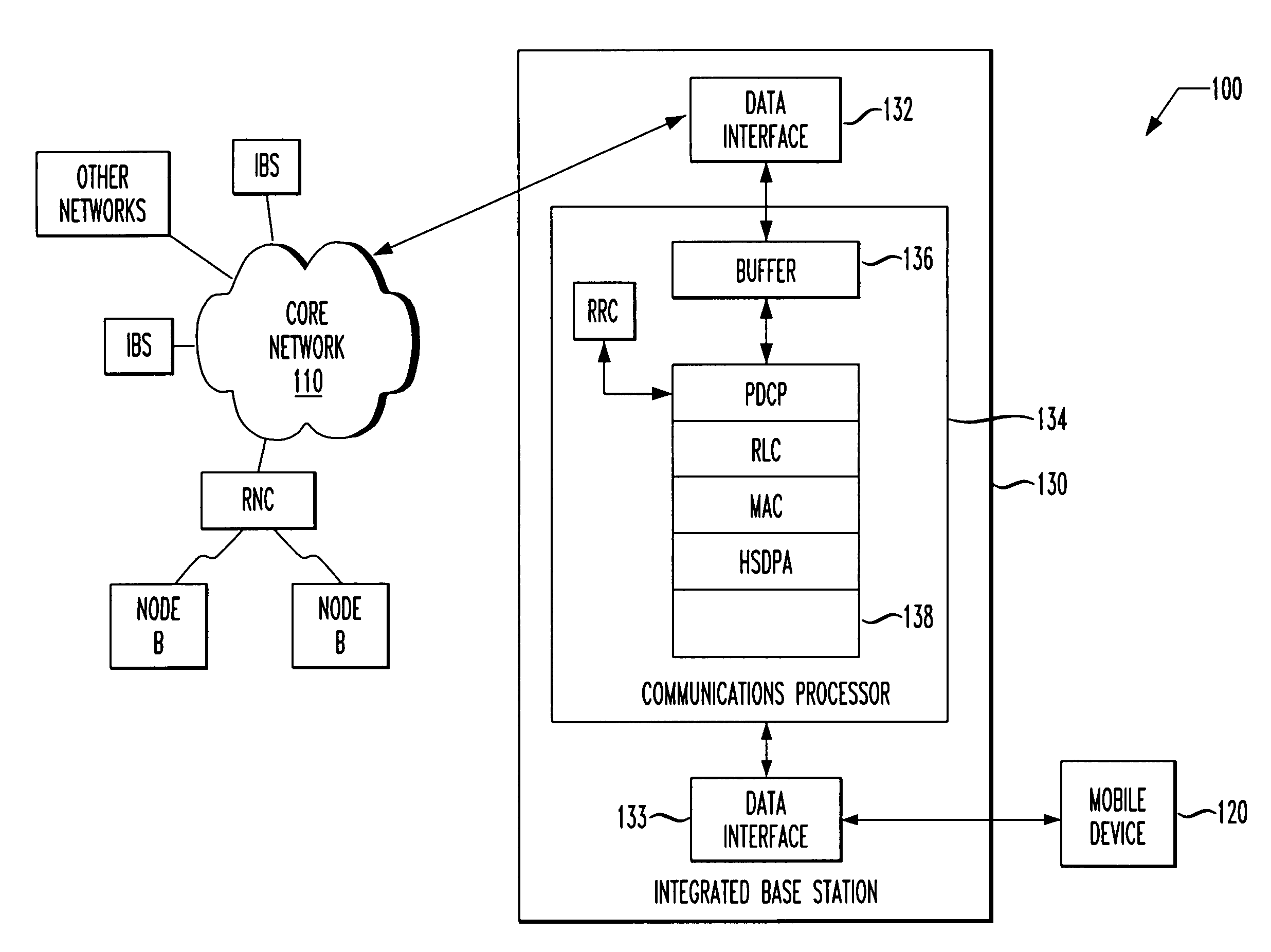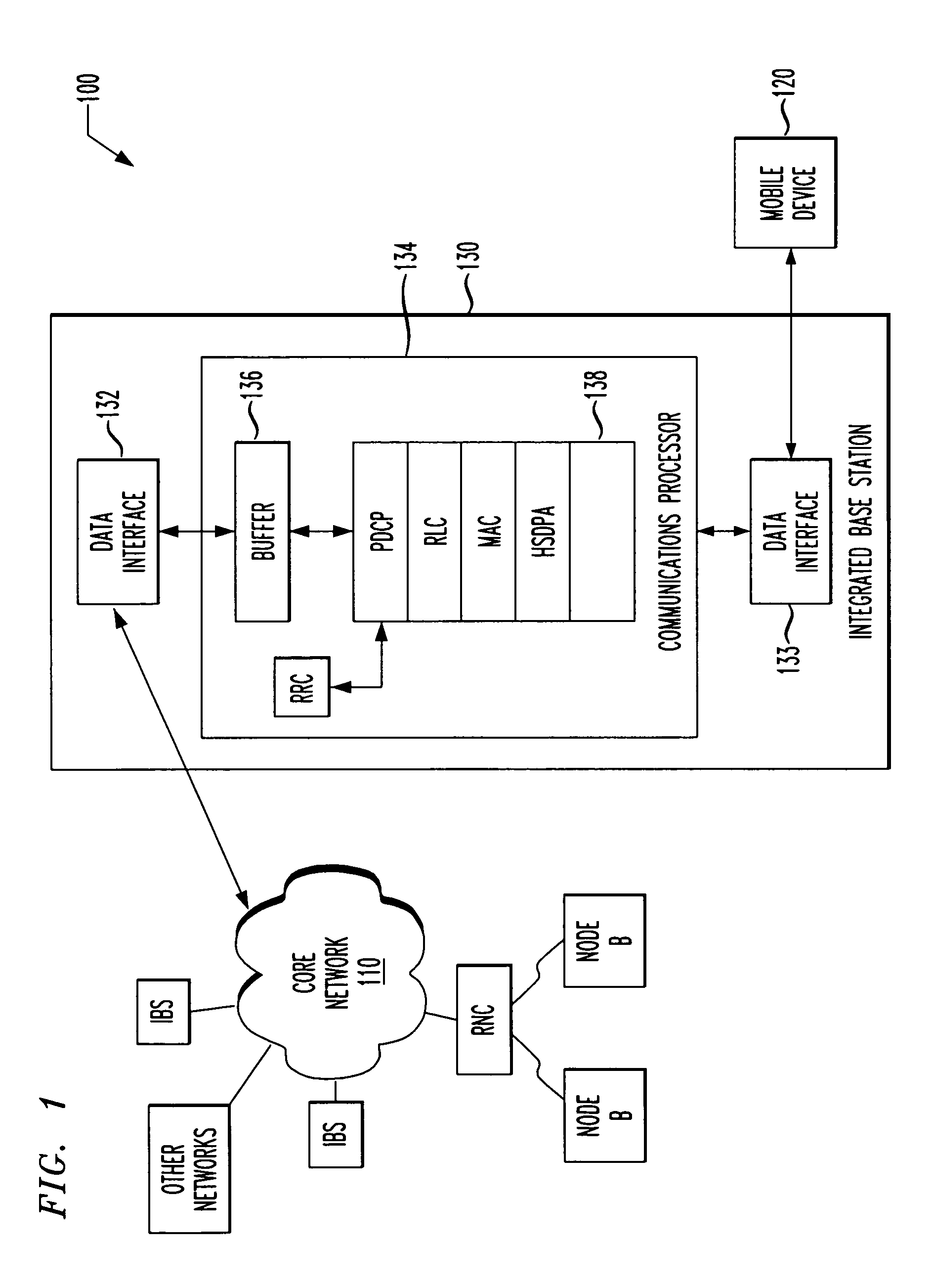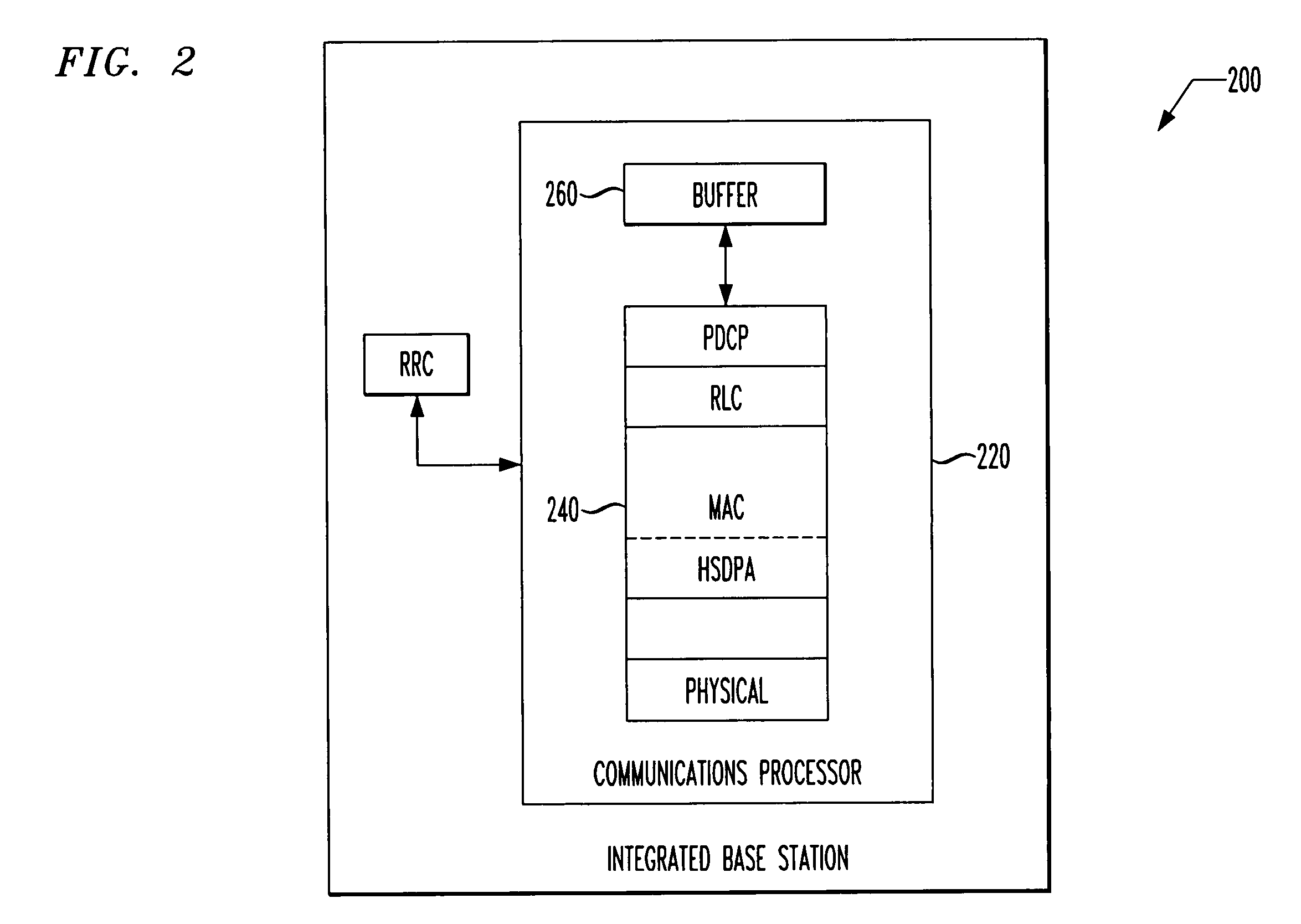Integrated base stations and a method of transmitting data units in a communications system for mobile devices
a communication system and mobile device technology, applied in the field of communication networks, can solve the problems of high end-to-end latency, limited control of rnc, and information contained in messages may become obsolete, so as to reduce the number of staging buffers, improve the performance of the protocol stack, and facilitate the implementation of optimizations.
- Summary
- Abstract
- Description
- Claims
- Application Information
AI Technical Summary
Benefits of technology
Problems solved by technology
Method used
Image
Examples
Embodiment Construction
[0025] Referring initially to FIG. 1, illustrated is a block diagram of one embodiment of a cellular communications system for mobile devices, generally designated 100, including an integrated base station 130 constructed according to the principles of the present invention. The communications system 100 also includes a core network 110 and a mobile device 120.
[0026] The communications system 100 may be a conventional communications system such as a UMTS having multiple communications nodes coupled through wireless or wired mediums. Of course, the communications system 100 may be another type of communications system, such as, a Global System for Mobile Communications (GSM). Thus, one skilled in the art will understand that the discussion regarding a UMTS also applies to other cellular communications systems and components. For ease of discussion, the integrated base station 130 is representative of the other integrated base stations that are illustrated. One skilled in the art wil...
PUM
 Login to View More
Login to View More Abstract
Description
Claims
Application Information
 Login to View More
Login to View More - R&D
- Intellectual Property
- Life Sciences
- Materials
- Tech Scout
- Unparalleled Data Quality
- Higher Quality Content
- 60% Fewer Hallucinations
Browse by: Latest US Patents, China's latest patents, Technical Efficacy Thesaurus, Application Domain, Technology Topic, Popular Technical Reports.
© 2025 PatSnap. All rights reserved.Legal|Privacy policy|Modern Slavery Act Transparency Statement|Sitemap|About US| Contact US: help@patsnap.com



